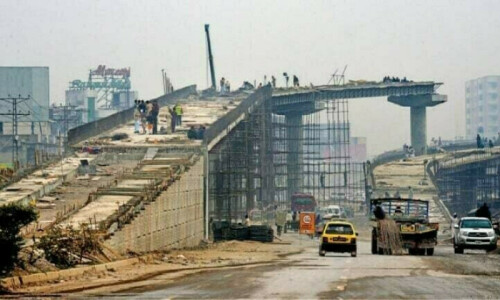NAGASAKI When the atom bomb “Fat Boy” devastated Nagasaki 65 years ago on Monday, one of the buildings reduced to rubble was the city's Urakami cathedral - then among the largest churches in Asia.
The blinding nuclear flash that would claim more than 70,000 lives in the city also, in an instant, blew out the stained glass windows of the church, toppled its walls, burnt its altar and melted its iron bell.
But, in what local Christian followers have likened to a miracle, the head of a wooden Virgin Mary statue survived amid the collapsed columns and scorched debris of the Romanesque church flattened on August 9, 1945.
The appearance of the war-ravaged religious icon is haunting. The Madonna's eyes have become scorched, black hollows, the right cheek is charred, and a crack runs like a streaking tear down her face.
“When I first saw (the damaged statue), I thought the Virgin Mary was crying,” said Shigemi Fukahori, a 79-year-old parishioner at the church who remembers the statue before the explosion that destroyed the cathedral that is called St Mary's in English.
“I thought it's as if the Virgin Mary is telling us about the misery of war by sacrificing herself,” Fukahori said, quietly gazing at the statue. “This is a significant symbol of peace which should be preserved forever.” The remains of the statue of the Virgin Mary have found a new home inside a rebuilt church, also called St Mary's, built on the same site, only 500 metres from the bomb's ground zero.
But the powerful relic has also travelled widely as a symbol of peace - most recently to New York for a UN nuclear disarmament conference in May, when it was also taken to a mass at the city's St. Patrick's Cathedral.
UN secretary general Ban Ki-moon, who saw the statue in the US city, visited Nagasaki to be reunited with it on Thursday before attending a peace memorial ceremony in Hiroshima.
On their way to New York, the Nagasaki religious leaders carried the statue to the Vatican, where it was blessed by Pope Benedict XVI, and to a ceremony in Guernica, Spain to mourn the victims of Nazi air attacks during the Spanish Civil War.
“We travelled overseas with the statue, with the idea that we would like to ask the Virgin Mary to act for peace,” Joseph Mitsuaki Takami, the archbishop of Nagasaki, said in an interview with AFP.
“There are many ways to make such an appeal - through pictures, film or narratives about the horror - but the atomic-bombed Mary appears to have a different power to tell us about it.” Nagasaki, a southwestern port city, was Japan's sole gateway to the outside world during much of the Edo era (1603-1868) when the country retreated into self-imposed isolation.
The Edo era's Tokugawa Shogunate imposed anti-Christian edicts in the early 17th century, oppressing Christians and banishing European priests.
Some believers were martyred and others secretly maintained their creed as “hidden Christians” for more than 200 years until Japan reopened under the Meiji era that began in the late 19th century.
Some 8,500 local Christians were killed in the Nagasaki bombing.
Brother Thomas Ozaki Tagawa, speaking for other local Christians, said many were puzzled by why the United States attacked Nagasaki, Japan's largest Christian community.
While many of the survivors try to see the tragedy as a tribulation handed to them by God, their agonies are still rooted deeply in their minds.
“I was too sad to cry because it was simply too merciless,” said Fukahori, who survived inside a Nagasaki factory when the mushroom cloud rose.
“Many survivors are still suffering the after-effects of the radiation,” Fukahori said. “All I can do is to pray for them. I hope Nagasaki will be the last place ever to fall victim to an atomic bomb.” Many Americans believe the bombs were necessary to bring a quick end to the war and avoid a bloody land invasion, but the archbishop disagrees.
“Japan killed millions in Asia, but that doesn't mean dropping atomic bombs is justified,” he said. “Possessing nuclear weapons in itself is a sin.” Mayor Tomihisa Taue said “People simply need to use the power of their imagination and consider how it would be if this happened to their family or friends. You can easily imagine that when you visit Nagasaki or Hiroshima.”—AFP











































Dear visitor, the comments section is undergoing an overhaul and will return soon.